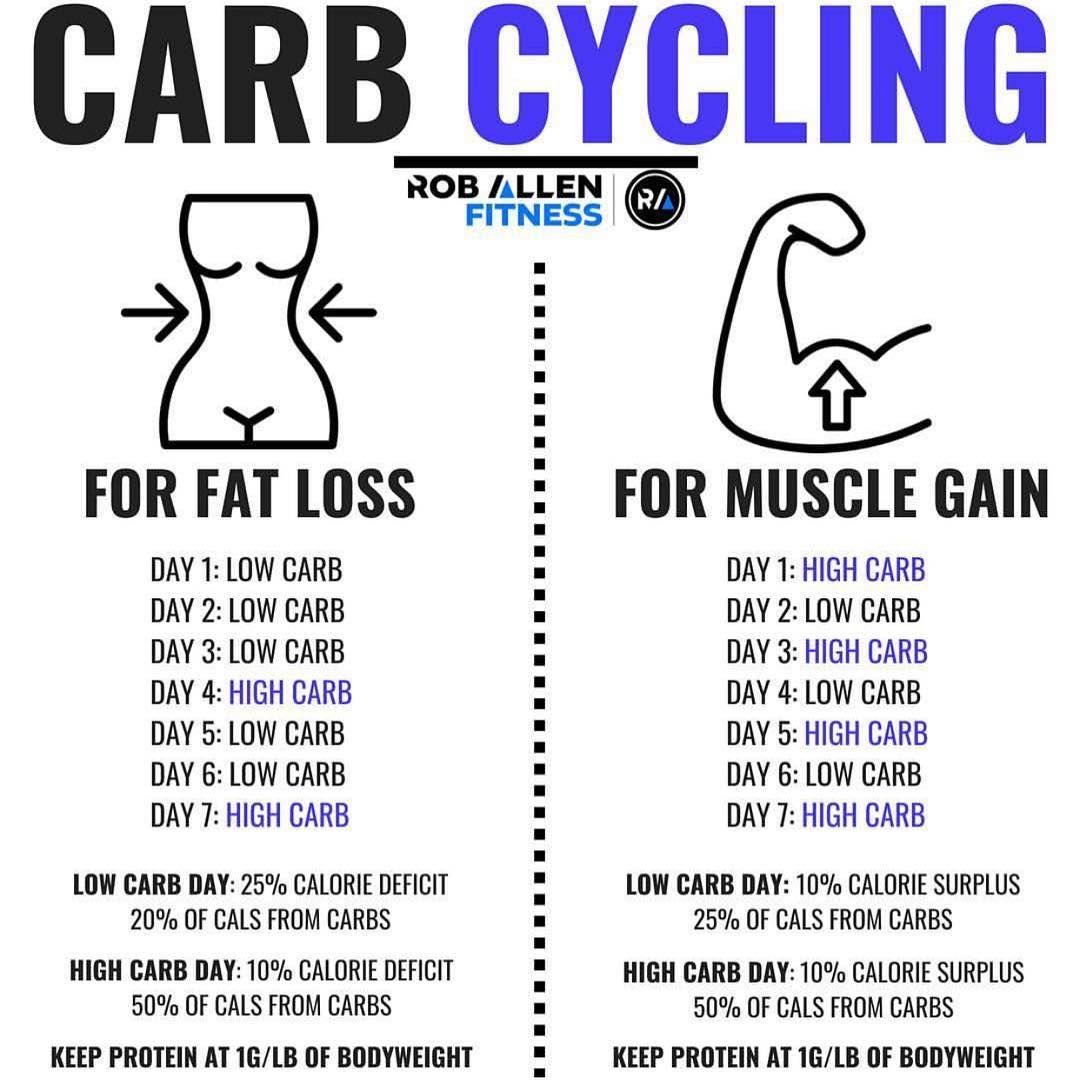Carb Cycling: How to Use It for Fat Loss and Muscle Gain

Carb cycling is a dietary strategy that involves alternating high and low carbohydrate intake throughout the week to optimize fat loss and muscle gain. This method has gained popularity among fitness enthusiasts and athletes looking to achieve their body composition goals effectively.
Understanding Carb Cycling
Carbohydrates are the body’s primary source of energy. When you consume carbohydrates, your body breaks them down into glucose, which fuels your muscles and brain. However, if you consume more carbohydrates than your body needs for immediate energy, the excess gets stored as glycogen in the muscles and liver, or converted into fat.
Carb cycling involves strategically adjusting your carbohydrate intake to manipulate your body’s fuel sources. By cycling between high-carb and low-carb days, you can teach your body to efficiently burn fat while preserving muscle mass.
How Carb Cycling Works
On high-carb days, you consume a higher amount of carbohydrates to replenish glycogen stores, support intense workouts, and provide energy for daily activities. These days promote muscle growth and help maintain metabolic efficiency.
On low-carb days, you reduce your carbohydrate intake, forcing your body to tap into fat stores for energy. This phase promotes fat burning and can help you achieve a caloric deficit, ultimately leading to weight loss.
The timing and frequency of high and low-carb days can vary depending on individual goals, dietary preferences, and workout schedules. Some individuals may follow a weekly cycle of alternating high-carb and low-carb days, while others may choose to cycle their carbohydrates within a single day, consuming different amounts at different times.
Benefits of Carb Cycling
Carb cycling provides several benefits for fat loss and muscle gain:
Improved Fat Burning: By depleting glycogen stores on low-carb days, your body relies on fat as its primary fuel source, leading to increased fat burning.
Muscle Preservation: High-carb days provide the necessary fuel to support intense training sessions, preserving muscle mass.
Enhanced Metabolism: Cycling between high and low-carb days can prevent metabolic adaptation, where your body adjusts to a caloric deficit and slows down its metabolism.
Flexibility and Sustainability: Carb cycling allows for dietary flexibility, as it doesn’t entirely restrict you from consuming carbohydrates. This makes it easier to adhere to in the long term.
Implementing Carb Cycling
The key to successful carb cycling is finding the right balance that works for you. Consider the following guidelines:
Determine Your Goals: Are you primarily focused on fat loss or muscle gain? Adjust your carbohydrate intake accordingly.
Track Your Macros: Calculate your daily macronutrient requirements, including proteins, fats, and carbohydrates.
Identify High and Low-Carb Days: Designate specific days for each phase based on your workout schedule and personal preferences.
Choose Healthy Carbohydrate Sources: Opt for complex carbohydrates such as whole grains, fruits, and vegetables to ensure adequate nutrient intake.
Monitor Your Progress: Regularly assess your body composition, energy levels, and overall well-being to determine if adjustments are needed.
Conclusion
Carb cycling is a flexible and effective strategy for achieving fat loss and muscle gain. By strategically alternating high and low-carb days, you can optimize your body’s fuel sources, improve metabolic efficiency, and achieve your desired physique.
Remember, it’s essential to listen to your body and make adjustments as needed. With consistency and proper implementation, carb cycling can be a powerful tool to support your fitness journey.


